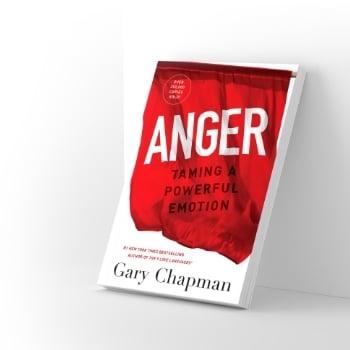You are handling your anger well, but can improve.
Think about the situations where your anger comes out most often. Is it with loved ones? At work? What happens when you react angrily? Are you a shouter, or do you turn your anger inward? What words do you tend to use? What feelings tend to come out when you’re angry, and how do those feelings find expression, in good ways or bad? Consider the following possibilities for future action:
Action Steps
- You would benefit from better understanding the distinction between good anger and bad anger. Definitive (or “good”) anger, as Dr. Chapman describes it, is a normal response to genuine wrongdoing, injustice, or mistreatment. Distorted (or “bad”) anger, on the other hand, is our response to others when we have incorrectly perceived a construed wrongdoing, injustice, or mistreatment. We don’t have all the facts correct in distorted anger. Learn some other key differences between the two responses in chapter four of this book.
- Some people look like they have it all together on the outside and rarely appear out of control due to anger, while underneath the façade they tend to simmer with unexamined anger. This “implosive” anger can be characterized by brooding or withdrawal, among other expressions. Dr. Chapman identifies key strategies to deal with implosive anger in chapter six of his book.
Next steps to improve your relationship.
NOTE: Though every effort has been made to create a useful assessment tool for the end user, the authors and publishers make no warranties, express or implied, regarding the accuracy, completeness, timeliness, or usefulness of any information contained or referenced therein. This assessment is not to be used as a substitute for any medical or psychological advice, diagnosis, or treatment of any condition or problem. Users should direct all questions regarding these matters to a licensed clinician. The use of this assessment does not create an express or implied professional relationship. Any actions taken as a result of using this assessment are at the sole discretion of the user, and the author and publishers are not or will not be liable or otherwise responsible for any decision made or any action taken due to the use of this assessment.

